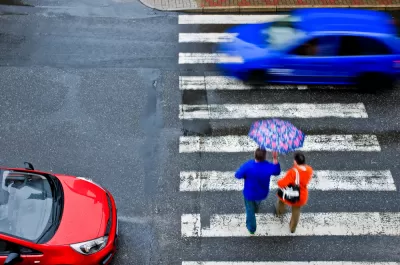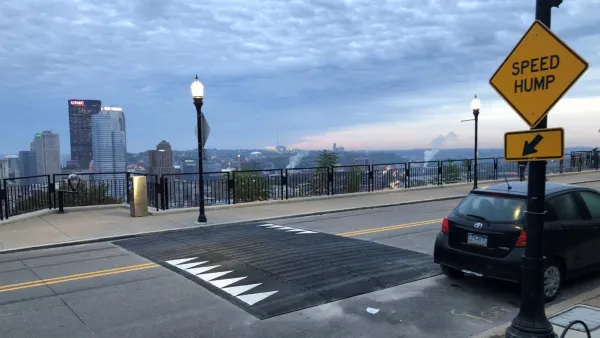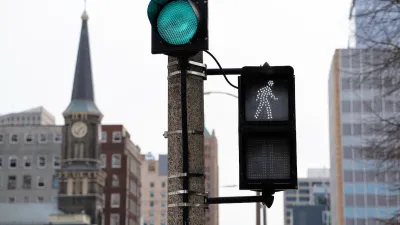Community leaders sometimes present the biggest obstacles when and where the rubber hits the road on Vision Zero traffic safety improvements. New York City Mayor de Blasio is pushing for more power for the DOT.

Brad Aaron updates some of the inside baseball about how New York City is implementing Vision Zero safety improvements. In this case—how the city negotiates between DOT recommended infrastructure investments with the political pressures of community boards. For much of the year, the DOT capitulated to community boards:
"This year, for instance, when facing opposition or anticipating blowback from community boards, DOT watered down a road diet and other safety measures planned for Riverside Drive; proposed disjointed bike lanes for Kingston and Brooklyn avenues; abandoned a project that would have converted a dangerous slip lane in Harlem into a public plaza; and stalled a road diet for 111th Street in Corona, despite support from Council Member Julissa Ferreras."
The consequence of one of those decisions turned tragic this week, when "an MTA bus driver killed a pedestrian while making a turn that would have been eliminated had DOT not bowed to community board demands to scrap the plan."
Aaron shares news, however, that Mayor Bill de Blasio is taking a firmer tone in allowing Transportation Commissioner Polly Trottenberg more "latitude to implement safety improvements that don’t get a “yes” vote from community boards." According to a direct quote of the mayor from an article in the Wall Street Journal by Mara Gray, de Blasio says, "I respect community boards….But community boards don't get to decide.
A sad parallel to this story emerged in Los Angeles this week, following the LAUSD closure that made national news. As reported by Joe Linton, 17-year-old Andres Perez was struck and killed in a crosswalk while walking to school on a stretch of North Figueroa Street that was planned for safety improvements until local City Councilmember Gil Cedillo intervened.
FULL STORY: De Blasio Gives DOT Permission to Put Safety Above Community Board Whims

Planetizen Federal Action Tracker
A weekly monitor of how Trump’s orders and actions are impacting planners and planning in America.

San Francisco's School District Spent $105M To Build Affordable Housing for Teachers — And That's Just the Beginning
SFUSD joins a growing list of school districts using their land holdings to address housing affordability challenges faced by their own employees.

The Tiny, Adorable $7,000 Car Turning Japan Onto EVs
The single seat Mibot charges from a regular plug as quickly as an iPad, and is about half the price of an average EV.

Seattle's Plan for Adopting Driverless Cars
Equity, safety, accessibility and affordability are front of mind as the city prepares for robotaxis and other autonomous vehicles.

As Trump Phases Out FEMA, Is It Time to Flee the Floodplains?
With less federal funding available for disaster relief efforts, the need to relocate at-risk communities is more urgent than ever.

With Protected Lanes, 460% More People Commute by Bike
For those needing more ammo, more data proving what we already knew is here.
Urban Design for Planners 1: Software Tools
This six-course series explores essential urban design concepts using open source software and equips planners with the tools they need to participate fully in the urban design process.
Planning for Universal Design
Learn the tools for implementing Universal Design in planning regulations.
Smith Gee Studio
City of Charlotte
City of Camden Redevelopment Agency
City of Astoria
Transportation Research & Education Center (TREC) at Portland State University
US High Speed Rail Association
City of Camden Redevelopment Agency
Municipality of Princeton (NJ)





























